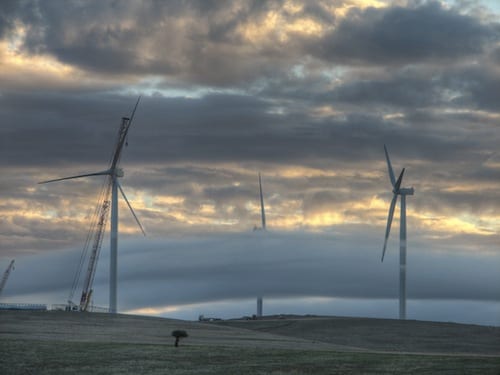A new report charting Australia’s rising power prices over the past decade has undermined claims that South Australia’s high electricity prices have been driven by the state’s uptake wind and solar, showing that its rises have been less than in coal dependent states.
The argument that South Australia’s high electricity prices are a result of its pursuit of wind and solar is an argument prosecuted by conservative media and politicians alike, but the new report from the Australian National University underlines the fact that its prices have always been high, but have moderated since its investment in renewable energy.
The ANU report, commissioned by News Limited, but available here, shows that average household electricity bills have increased less in the renewables-rich state of South Australia over the past 10 years than they have in Australia’s eastern states, which are predominantly powered by coal and gas-fired generation.
Overall, the report finds that the average Australian electricity bill has increased by 108 per cent over the past 10 years, with annual bills averaging at $1,902 in December 2016, up from $916 in 2006.
“Only tobacco products have increased more quickly over this period,” the report notes, “and the large increase (t)here is due to significant increases in tobacco taxation.”
Of course, South Australia has not been immune to this trend of soaring power prices, but the report’s findings support what RenewEconomy has often pointed out, this is not a direct result of the state’s ambitious renewable energy target.
As the table above illustrates, SA has, historically, had high electricity prices – including 10 years ago, well before the roll-out of wind farms and solar panels made the state a world-leader in renewable energy penetration.
And what about the other states, which have been much slower to shift to renewable sources of energy generation.
Says the report, “there is some variation between the states with the greatest growth occurring in Queensland (136 per cent) and Victoria (119 per cent).
“In terms of overall electricity bills, the highest bills are, on average, in Queensland at $2,102 and Tasmania, at $2,181 per year,” the report says.
And, as David Leitch points out, those coal states may face even further rises in coming years, thanks to high wholesale electricity prices in the past few months.
Leitch estimated that $9 billion could be added to consumer bills, but only a small fraction in South Australia, which again would witness the smallest rises in percentage terms – again thanks to its investment in wind and solar.











